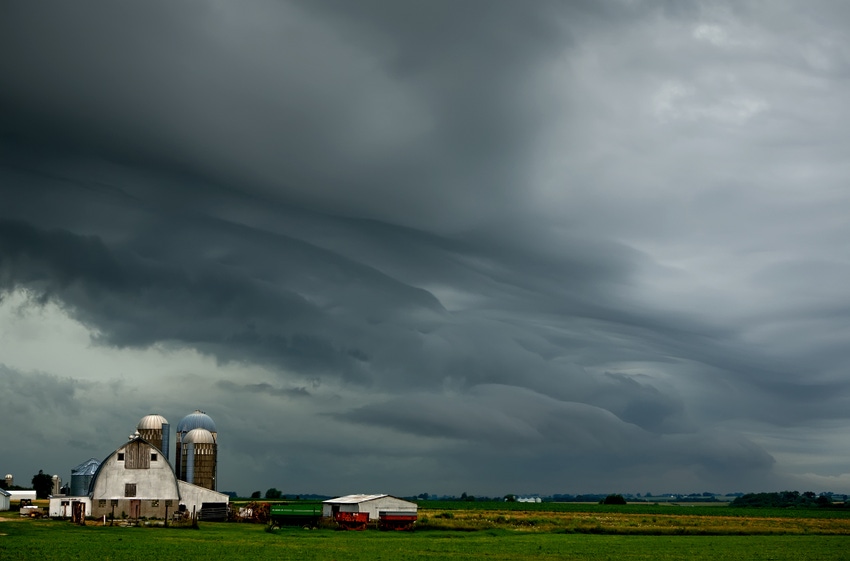Revised forecast lowers dairy prices by as much as 30% compared to pre-COVID-19 levels.

Just three weeks after Rabobank released its "Q1 2020 Dairy Quarterly" report, the bank has released an update following an “unfortunate reversal” in the short-term outlook for the dairy sector.
According to Rabobank analysts, the sector is now in uncharted territory and is expected to experience three waves of market movement over the next 12 months before it returns to a “new” normal.
The first wave is characterized by a spike in domestic dairy demand driven by panic buying during the first month of reduced mobility during the COVID-19 pandemic in the U.S. and stay-at-home orders. This retail demand, the bank noted, will offset a larger portion of declining foodservice demand.
The cheese market alone has taken a huge hit, because more than 45% of U.S. cheese production is used in the foodservice channel. Rabobank reported that an estimated 50% of that volume has vanished (about 150 million lb., or 68,000 metric tons, per month). Rabobank said cash dairy markets are eroding quickly, and the CME cheddar block cheese price fell 37% in less than two weeks to $1.15/lb. on April 3 -- the lowest level since 2009.
The second wave will be characterized by more muted retail demand and increased logistical and financial challenges. According to the update, consumers are expected to return to stores on an as-needed basis to fill gaps in their pantries and refrigerators rather than large shopping occasions. However, the prolonged impact from lower foodservice sales, the seasonal peak in Northern Hemisphere milk production and a significant slowdown in global trade will contribute to rising year-over-year stock levels. This will put downward pressure on dairy commodity prices and, subsequently, farm-gate milk prices.
Additionally, processing capacity, storage availability and credit terms (liquidity) are expected to max out without government assistance, Rabobank said.
A longer-term third wave will likely include a global recession and widespread loss of income and savings, among other factors. Rabobank said this could keep dairy product prices and farm-gate milk prices under pressure into 2021.
Still, Rabobank said since dairy products are historically part of government-aided feeding programs, a deep recession may result in greater use of these products if more people need food assistance.
In light of the rapidly changing situation, Rabobank adjusted its latest global dairy commodity outlook but noted that, given the magnitude of market disruption, “current forecasts are often outdated before they are published.”
The revised forecast lowers prices by as much as 30% compared to Rabobank’s pre-COVID-19 levels. Between 40% and 50% of U.S. milk production is covered by risk management programs that will provide some downside protection, Rabobank noted, adding that proposed government aid packages will also likely support dairy producers without coverage.
“Nevertheless, the negative market impact from COVID-19 could have a significant negative impact on producers and accelerate dairy farm consolidation,” the report authors noted.
The disruption isn’t just happening in the U.S., however, as COVID-19 has wreaked havoc on many other countries. Rabobank reported that increased milk dumping, plant closings and force majeure are also occurring in Europe.
“Dairy processors in France, Italy and the U.S. have asked producers to reduce milk deliveries by up to 5%. In the U.S., dairy processors with ‘base’ programs are reminding dairy farmers that any production in excess of their base will receive a significantly lower price,” they added.
On the trade front, Rabobank's COVID-19 base-case analysis foresees trade for the key dairy commodities skim milk powder, whole milk powder and cheese decreasing 11%, 13% and 5%, respectively, in 2020 versus 2019.
Led by a severe contraction in China due to the pandemic, China's imports of skim and whole milk powders are expected to decline 28% this year. From there, the next-largest decline in dairy imports is expected from the Middle East/North Africa region. Southeast Asia's imports of skim and whole milk powders are also estimated to decline nearly 8%, and dairy imports into Latin America are expected to fall 20% year over year.
About the Author(s)
You May Also Like



.png?width=300&auto=webp&quality=80&disable=upscale)

